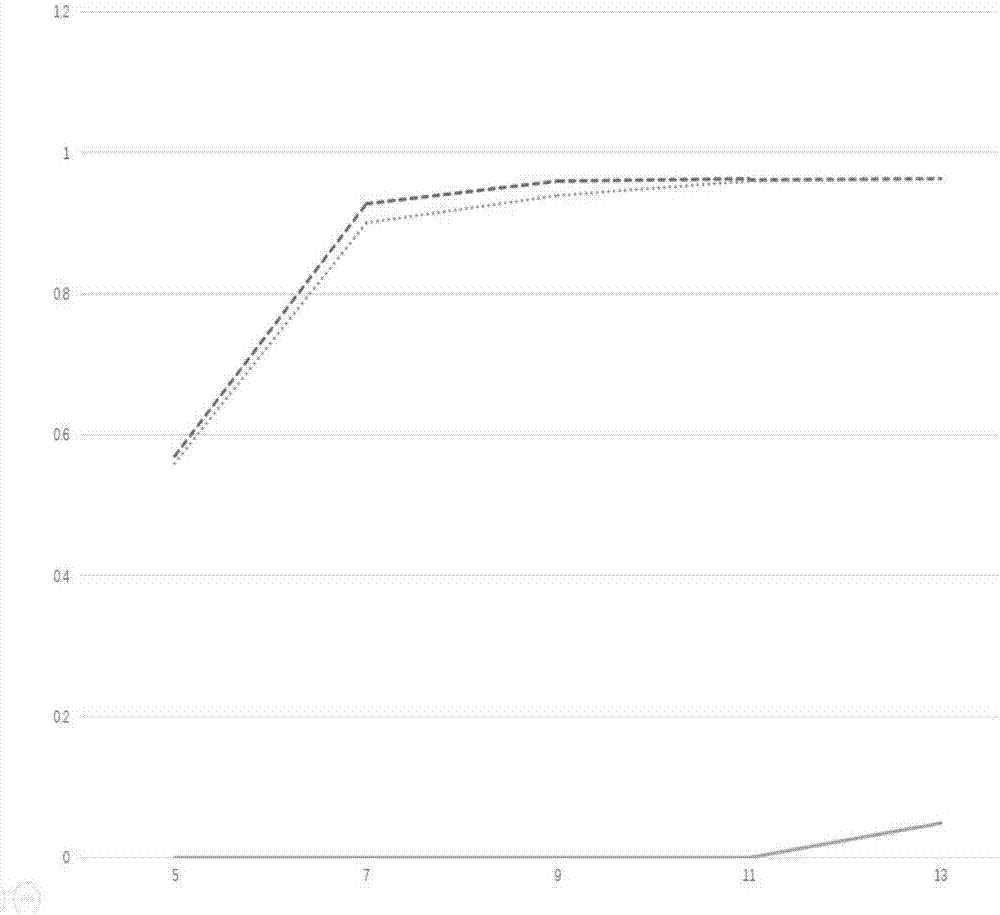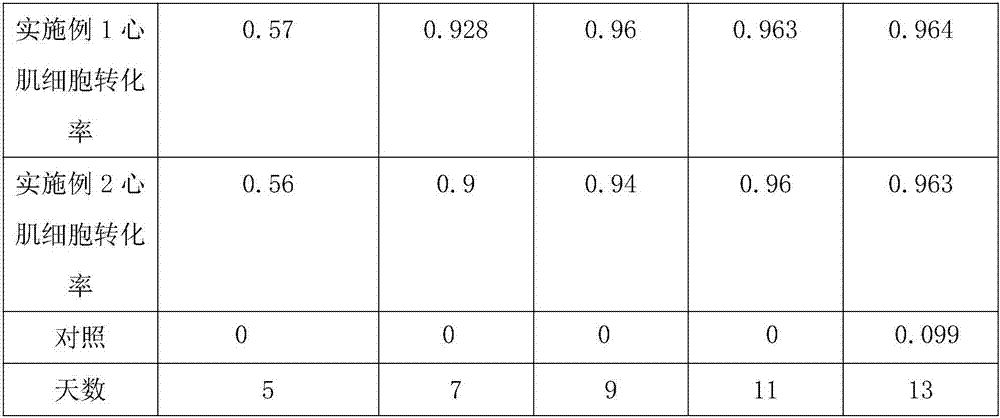Special serum-free culture medium for human embryo stem cell differentiation
A technology for human embryonic stem cells and differentiation medium, applied in the field of stem cell culture medium, can solve the problems of slow growth rate, affecting cell expansion, easy to appear aging, etc., to achieve control of infection risk, no change in biological characteristics, and differentiation efficiency. and high survival rate
- Summary
- Abstract
- Description
- Claims
- Application Information
AI Technical Summary
Problems solved by technology
Method used
Image
Examples
Embodiment 1
[0020] Embodiment 1: recovery, cultivation and subculture of the first method human embryonic stem cells;
[0021] (1) A commercially purchased human embryonic stem cell line (H9) was purchased from Jiangsu Stanford Biotechnology Co., Ltd. Melt rapidly in a water bath (within 20s), and add to 20mL human embryonic stem cell medium (consisting of the following final concentrations of components: L-glutamine 2mmol / L, L-sodium pyruvate 0.2mmol / L, transfection Ferritin 6.5mg / L, sodium selenite 30mg / L and human epidermal growth factor: 0.15mg / L, fibronectin: 0.3mg / L, cell activity promoting peptide (sequence as shown in SEQ ID NO: 1) The final concentration is 50ppm, use DMEM / F12 (1:1) medium for constant volume) in a 50mL centrifuge tube, naturally precipitate for 30min, suck off the supernatant, gently resuspend the precipitate with 3mL medium, and then add the resuspension to Already layer MEFs on a 0.1% gelatin-treated 6 cm Petri dish. When the clones of human embryonic stem c...
Embodiment 2
[0023] Embodiment 2: second method recovery, cultivation and subculture of human embryonic stem cells;
[0024] (1) A commercially purchased human embryonic stem cell line (H9) was purchased from Jiangsu Stanford Biotechnology Co., Ltd. Melt rapidly in a water bath (within 20s), and add to 20mL human embryonic stem cell culture medium (composed of the following components: L-glutamine 2mmol / L, L-sodium pyruvate 0.2mmol / L, transferrin 6.5mg / L, sodium selenite 30mg / L and human epidermal growth factor: 0.15mg / L, fibronectin: 0.3mg / L, cell activity promoting peptide (sequence shown in SEQ ID NO: 2) final concentration is 50ppm , use DMEM / F12 (1:1) medium to make constant volume) in a 50mL centrifuge tube, naturally precipitate for 30min, suck off the supernatant, gently resuspend the pellet with 3mL medium, and then add the resuspension to the already paved MEF 0.1% gelatin-treated 6 cm Petri dishes. When the clones of human embryonic stem cells were overgrown, they were treate...
Embodiment 3
[0027] Example 3 Analysis of Differentiation Transformation Efficiency
[0028] From the 5th day of differentiation, observe and record the beating situation of clones every day under the microscope, as well as the frequency of beating, and finally statistical drawing such as ( figure 1 ) shown. It can be seen that the culture medium shown in Example 1 and Example 2 can make the beating cells achieve more than 50% transformation of stem cells into cardiomyocytes in a short period of time, while the control method has no cardiomyocytes within 5 days The conversion of 9.9% was not achieved until the 13th day, while Examples 1 and 2 achieved a conversion of 96.4%, a very significantly high conversion. Through statistics, it is found that the frequency distribution of most beating clones of cardiomyocytes obtained in Examples 1 and 2 is between 55-75 times / min, and the average beating frequency of beating clones is (67.86) times / min, which has better cell activity .
[0029] Ta...
PUM
 Login to View More
Login to View More Abstract
Description
Claims
Application Information
 Login to View More
Login to View More - R&D
- Intellectual Property
- Life Sciences
- Materials
- Tech Scout
- Unparalleled Data Quality
- Higher Quality Content
- 60% Fewer Hallucinations
Browse by: Latest US Patents, China's latest patents, Technical Efficacy Thesaurus, Application Domain, Technology Topic, Popular Technical Reports.
© 2025 PatSnap. All rights reserved.Legal|Privacy policy|Modern Slavery Act Transparency Statement|Sitemap|About US| Contact US: help@patsnap.com


